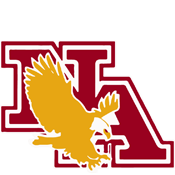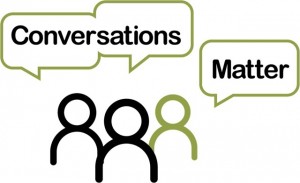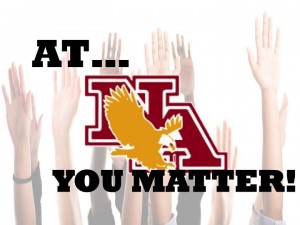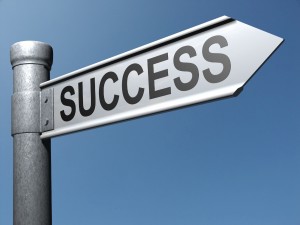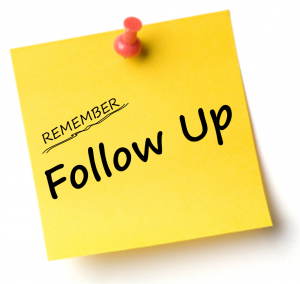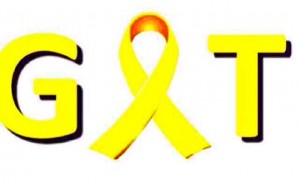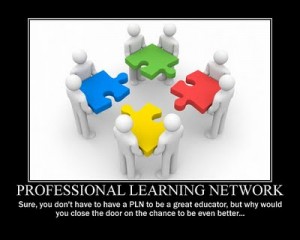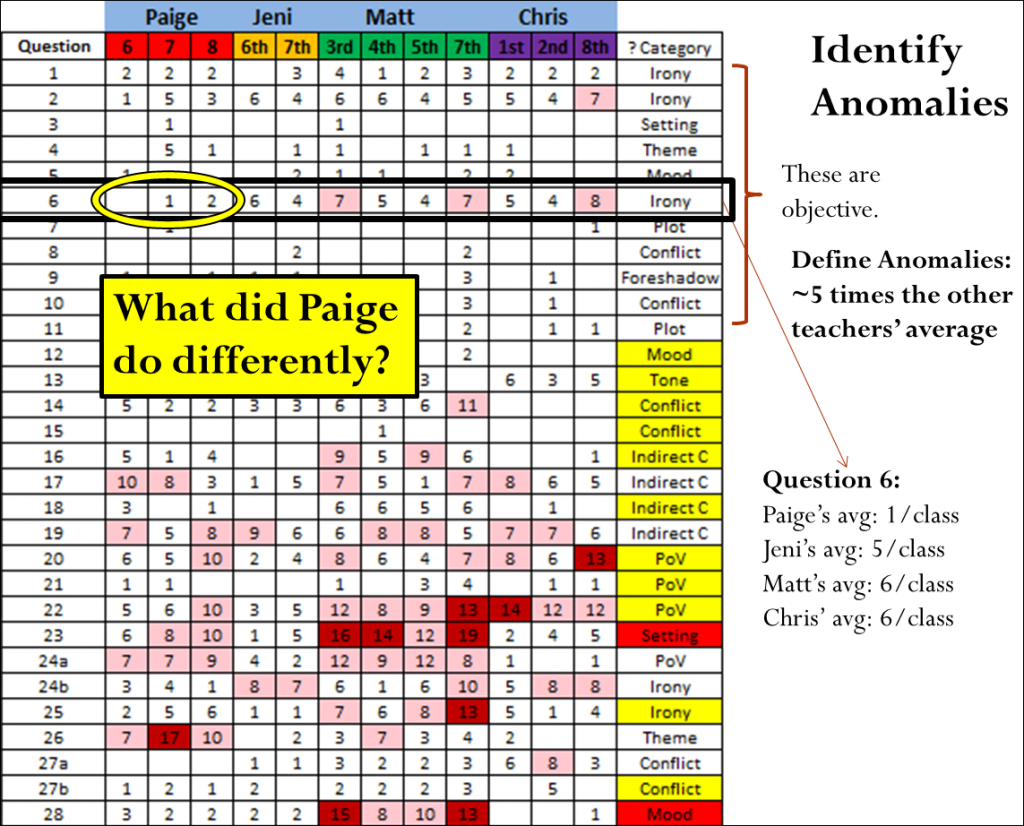 It’s been two weeks since I officially began my new position and I’m still getting used to being a part of a different district, starting over, and finding my way. In mid-February, 2014, I announced to the staff, faculty, students and parents of Gahanna Lincoln High School that I accepted the Principal position at New Albany High School, in New Albany, OH. Their responses via email, phone calls, text messages, tweets, Facebook and Instagram posts, cards and letters over the next four months were overwhelming. The outpour of support and encouragement still bring tears to my eyes. I was able to remain relatively calm during that time; however, I became more anxious as graduation approached. What was I going to say? Would it even matter? Would I even be able to speak or would I be overcome with emotion? These and many other questions raced through my mind for what seemed like forever.
It’s been two weeks since I officially began my new position and I’m still getting used to being a part of a different district, starting over, and finding my way. In mid-February, 2014, I announced to the staff, faculty, students and parents of Gahanna Lincoln High School that I accepted the Principal position at New Albany High School, in New Albany, OH. Their responses via email, phone calls, text messages, tweets, Facebook and Instagram posts, cards and letters over the next four months were overwhelming. The outpour of support and encouragement still bring tears to my eyes. I was able to remain relatively calm during that time; however, I became more anxious as graduation approached. What was I going to say? Would it even matter? Would I even be able to speak or would I be overcome with emotion? These and many other questions raced through my mind for what seemed like forever.
Following is my brief graduation speech and Parting Words of Wisdom to the GLHS Class of 2014. However, to me, it’s more than just a speech: It’s my way of putting into words my love for the people of Gahanna Jefferson Public Schools and the Gahanna community for helping me become the person I am today.
Five days before my college graduation in June, 1994, I received a phone call that completely changed my life. On the other end of the phone, I heard the familiar voice of the beloved Gahanna Middle School South principal, Denny Souder. He requested I come in for a second interview. However, it wasn’t a second interview, but a job offer to teach 8th grade American History. It was my chance to start my professional journey and to positively change lives and impact futures through the awesome career as an educator.
I could not have predicted that 20 years later, I would be blessed with the opportunity to stand before you in my final days as the Principal of Gahanna Lincoln High School; one the most authentic, progressive, and caring high schools in Central Ohio. I could not have predicted how the thousands of students who allowed me to play a smart part in their life journey would enrich my life. I could not have predicted the many friendships, life-changing experiences, and growth opportunities I would have as a part of the Gahanna Jefferson Public Schools community.
I am forever grateful to the Board of Education, past and current superintendents, staff, and Gahanna parents for embracing my vision to create a school where every student has a sense of belonging, where students can find their purpose, and have as many opportunities to find their niche in a safe, loving, yet challenging environment; and a place that challenges students to be better each and every day. I am a better man, husband, father, and leader by being a part of the Gahanna Community.
Seniors, on Tuesday, August 24th, 2010, you walked into GLHS as scared, apprehensive, nervous, and fascinated freshmen on Freshmen Welcome Day. You were greeted by over 100 cheering Link Crew leaders prepped to accept you as a part of the Gahanna Lincoln Family. The next morning, on Wednesday, August 25th, 2010, at the sound of the first period bell, you heard what would become a familiar start of the school day and it’s only fitting that you end your GLHS journey the way it began:
Good morning Gahanna Lincoln High School Class of 2014. This is Mr. Carter with a few parting words of wisdom.
• Don’t wish away what is NOW by focusing so much on what’s NEXT.
• Don’t be a victim of your circumstances, but be victorious in spite of your circumstances.
• Become the type of person who others are excited to see you come, and sad to see you go.
• Work to live, don’t live to work.
• There is no greater sound than the joy-filled laughter of a toddler.
• 80% of your joy or sorrow as an adult will come from the person you marry, so choose wisely.
• Give others the benefit of the doubt, just as much as you want to be afforded the same thing.
• Learn how to articulate how you feel. Use more words besides, “good,” “fine,” or “frustrated.”
• Use things, not people.
• It’s okay to love what you do as long as you love more the people whom you do it for.
• There are really only two things in life that you truly can control: your attitude and your actions.
• No matter how old you are, you will always be your parents’ baby.
• The more time you spend helping others, the less time you have to judge them.
• Your appearance, your words, and your behavior do matter. They always have and always will.
• No one can make you feel bad or guilty without your permission.
• “You have to teach others how to treat you.” -Samantha Carter
• Mind your manners. They are not old-fashioned or out of style. Simple phrases like, “please,” “thank you,” “you’re welcome,” “sir,” “ma’am,” and “excuse me” go a long way.
• “Mind your business, so others won’t have to.” -David McGhee
• Your parents and guardians are much smarter than you think they are. You will soon find this out now that you are “grown.”
• If you have to ask if an article of clothing is too short, too high, too low, too tight, or too anything, then you probably shouldn’t wear it.
• Every aspect of your life doesn’t have to be shared on Twitter, Facebook, YouTube, Instagram, Vine, Flicker, SnapChat, Kik or any other form of social media. Please Pause Before You Post.
• In all that you do, BE GREAT!
With something to think about, this is Mr. Carter. Make it a great life… or not. The choice is yours!
Be Great,
Dwight
 Luckily, I can only count on one hand the number of times someone physically stole something from me. Regardless of the number of times it’s happened, I felt violated, frustrated, and angry. The nerve and audacity of someone to take something that doesn’t belong to them is baffling. While I’ve experienced this only a few times, others may have experienced this more often.
Luckily, I can only count on one hand the number of times someone physically stole something from me. Regardless of the number of times it’s happened, I felt violated, frustrated, and angry. The nerve and audacity of someone to take something that doesn’t belong to them is baffling. While I’ve experienced this only a few times, others may have experienced this more often. 